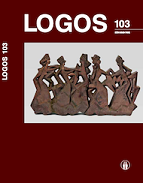Vaiśeṣikos realizmas versus budizmo fenomenalizmas Kinijos budistiniuose tekstuose
Vaiśeṣika Realism versus Buddhist Phenomenalism in Chinese Buddhist Texts
Author(s): Tadas SnuviškisSubject(s): Non-European Philosophy, East Asian Philosophy, Indian Philosophy
Published by: Visuomeninė organizacija »LOGOS«
Keywords: Vaiśeṣika; Buddhist philosophy; Comparative Philosophy; Eastern philosophy;
Summary/Abstract: This article discusses the significant topic of Indian Philosophy – the philosophical controversy between Vaiśeṣika and Buddhist thought. Usually, this debate is treated only within the context of Indian Philosophy, This article, however, emphasizes an unexpected and almost unexamined turn of the same controversy in China. The Chinese controversy stems from the translations of Buddhist texts into Chinese from the first centuries C.E. onwards that also included material on Brahmanic philosophy. The first part of the article discusses the philosophical assumptions as well as the main theories of both parties; the second presents a brief history of previous research, the tentative classification of sources, and finally – the most prominent cases of the dispute based on the analysis of primary sources.
Journal: LOGOS - A Journal of Religion, Philosophy, Comparative Cultural Studies and Art
- Issue Year: 2020
- Issue No: 103
- Page Range: 215-222
- Page Count: 8
- Language: Lithuanian

